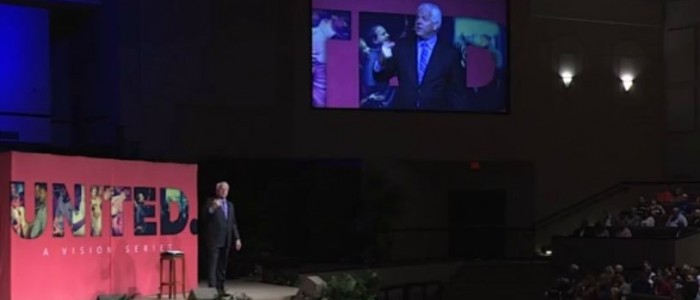My experience using image magnification (IMAG) in worship began way back in 1994. I started serving that year at one of the largest churches in America, First Baptist Church of Orlando. Two years earlier, the church had purchased a new in-house television system, complete with a rear screen video projector, in its 5,000-seat worship center. The brightest video projector available at the time, a GE “Talaria” was installed.
As I recall, it produced a whopping 2,500 lumens, less than a quarter of the brightness that size room calls for today; and a skilled technician was required to “tweak it” about once a month for it to maintain a decent image. But, despite the primitive nature of the new technology, I was fortunate to have been one of the early adopters of the use of IMAG in worship. There wasn’t a lot of precedent at that time, so we were breaking new ground.
With today’s much brighter and much cheaper video projectors, IMAG has become common in many, if not most, houses of worship. Of course, a minority of churches use projection for the live “re-imaging” of the worship leaders and the preacher with a video camera, the practice for which “image magnification” got its name. But the projection of song lyrics, Scripture, photos, videos, and other supporting graphics is now a staple in the realm of worship technology.
Whether your church is using video projection from a single source for graphics and video, or from multiple sources, including live camera re-imaging, here are a few tips I’ve learned over the years about effective use of IMAG in worship.










